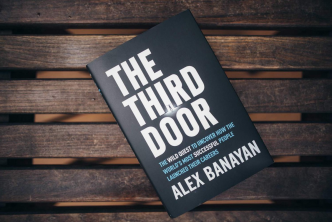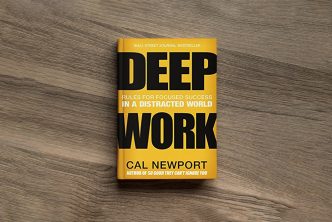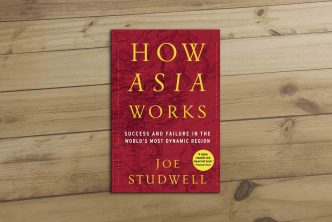Review: The Narrow Corridor: States, Societies, and the Fate of Liberty, by Daron Acemoglu and James A. Robinson, Penguin Books, 560 pages, September 2019.
Patrick O. Okigbo III · October 20 – 26, 2020
Why do some nations fare better than the rest? This is the question Daron Acemoglu and James A. Robinson set out to answer in their 2019 book, “The Narrow Corridor.” The book took a sweeping view of history to explain that it is liberty that delivers economic progress. The “liberty theory” is not a departure from the “institution theory” expounded in their earlier essays and book; instead, it deepens and complements it. The liberty theory brings into sharper focus some of Africa’s challenges, especially in its Sahel region.
Hobbesian Sahel
“The Narrow Corridor” harks back to Thomas Hobbes (1588–1679) who, in his book, “Leviathan,” described life in the 17th century as “solitary, poore, nasty, brutish, and short” with the people living in “continuall feare, and danger of violent death.” Four centuries later, fear and violent death is still the reality in Africa’s Sahel region. Life expectancy is in the low to mid-50s compared to Africa’s average that is in the mid-60s. The average Human Development Index (HDI) for the region is 0.491, which is lower than 0.528 for the world’s Least Developed Countries or 0.541 for sub-Saharan Africa. Over 80 percent of the Sahel population lives on less than $2 a day, which is worse than the average for sub-Saharan Africa. As is consistent with Africa’s story, all of these challenges in the Sahel are despite the region being one of the richest in the world in terms of natural resources, including gold, crude oil, and uranium.
The effects of climate change are evident in the Sahel. The region, which used to be lush green, has experienced severe climate change from around 4,000 BC resulting in desertification and disappearance of the major lakes and rivers. For instance, Lake Chad, which, in 5,000 BC, measured about 1 million square kilometres (slightly larger than all of Nigeria), has shrunk by over 99.9 percent. The climatic challenges result in extreme temperatures, deficient rainfall, and severe droughts. Food insecurity is a challenge as agriculture is carried out on degraded land that relies mostly on rainfall. Water supply is insufficient for humans and animals, resulting in changes in migration patterns and increased conflict over watering holes and pasture.
Changing demography is another yet another blow. With high fertility rates of 4.1 to 7.6 children per woman, the Sahelian population is expected to grow from the current 135 million to about 330 million by 2050. The number of young people is likely to double by 2050. This young population, which should be an advantage, is loading as a ticking timebomb. The region has large swaths of ungovernable spaces and has become the Jihadist frontlines in Africa.
Roots Curses
Are the above-discussed factors the root causes of the Sahel’s challenges, or are they symptoms of a deeper problem? What factors predisposed the Sahel region of Africa to such poor development outcomes? How did Europe get on a development trajectory while Africa has the highest concentration of fragile states globally?
For decades, scholars have sought to explain why Africa continues to underperform the West. The theories cover the gamut: colonialism, weak institutions, geography, disease burden, culture, and technology, and many others.
Many of the scholarly investigations in the mid to late 20th century focused on slavery and colonialism. Some scholars argued that human cargo depleted Africa’s human capital to the West. Scholars attributed the violence of slavery to the rise of banditry and corruption in Africa, which, in turn, explained the continent’s stunted socio-economic development. Scholars like Claude Ake argued, quite convincingly, that Africa still operated under the West’s draconian shadows even after independence. Yet, this argument does not provide a conclusive explanation.
In “The Wealth of Nations,” Adam Smith situates his analysis on the role of institutions. “Little else is required to carry a state to the highest degree of opulence from the lowest barbarism, but peace, easy taxes and a tolerable administration of justice; all the rest being brought about by the natural course of things.” While many other scholars postulated on institutions, Douglass North (in his 2002 paper, “Institutions and Economic Growth: A Historical Introduction”) properly situated the thesis. He explained that institutions comprised formal rules (like constitutions) and informal rules (like norms of behaviour) and that these rules affect property rights and economic exchange efficiency.
Jared Diamond’s 1997 book, “Guns, Germs, and Steel,” provides the most comprehensive review of geography’s impact on the divergence of societies from around 17,000 years ago. Diamond offers evidence that Eurasia’s climatic conditions led to the domestication of many edible grains and animals. These processes enabled the evolution of humans from hunter-gatherers to the establishment of sedentary societies, which, in turn, led to an increase in knowledge, the growth of technology, and more. Food surpluses enabled social classes and societies that could develop guns, steel swords, and sea-going vessels. This led to Europe’s advancement and divergence from the rest of the world, definitely from Africa.
John Gallup and Jeffery Sachs were the first to draw the relationship between disease burden and nations’ economic development in their 2001 journal publication, “The Economic Burden of Malaria.” The paper showed that countries with a high incidence of malaria tend to have low per-capita gross domestic product through its effect on productivity, absenteeism, savings and investments, medical costs, premature mortality, and many more.
In 2012, Daron Acemoglu and James Robinson presented the boldest explanation of the differential development of nations. “Why Nations Fail” argued that man-made institutions’ nature determines the development outcomes, not geography or disease burden. Rich countries have “inclusive institutions” while developing countries have “extractive institutions.” Institutions are “inclusive” when the people have a voice in how decisions are made in their society. In “extractive” institutions, a small group of people control decision-making instruments and refuse to open it up to other people.
The rise of China, from around 1978, appeared to eclipse the core theory in “Why Nations Fail.” While remaining the poster child for Communism and extractive institutions, China has consistently grown its gross domestic product and is within a close shot of becoming the world’s largest economy. Yuen Yuen Ang, in her 2016 book, “How China Escaped the Poverty Trap,” explained that good institutions are not the precondition for development. China used its weak institutions to develop a market economy. The book argued that the “underlying cause of economic development if indeed we had to name one, is the construction of an adaptive environment that empowers relevant actors to improvise solutions to continuously evolving problems.” This position does not negate the “institutions theory” as the China story is still evolving.
Which Leviathan Are You?
Acemoglu and Robinson built on a new theory in their 2019 book, “The Narrow Corridor: States, Societies, and the Fate of Liberty.” The core thesis of the book is that it is liberty that drives the development of nations. The book draws evidence from ancient Athens to modern-day Europe to validate that liberty “originates from a delicate balance of power between (the) state and society.”
Liberty does not come naturally in the ordinary course of life, nor is it a permanent end state. The state does not freely grant it, nor is it guaranteed when the masses wrestle power from the state. The usual course is that the strong dominate the weak. Liberty or human freedom can be repressed by using force or, in some cases, by customs and norms. The state, which the book refers to as Leviathan, can either be too strong that it becomes despotic or too weak that it cannot protect its citizens from various threats. Allowed to its devises, the state will dominate society or vice versa.
Liberty, which is the desired end state, was previously thought to be a product of an “enlightenment” era that transformed Europe. Acemoglu and Robinson argue, quite convincingly, that liberty is achieved by balancing the constant contestation and cooperation between the state and society. This precarious balance is achieved within a “narrow corridor” with the risk that the pendulum may swing to increase the powers of the state or, in the other direction, to improve the powers of society. The book outlines four potential outcomes of this contestation between the state and society to include a Despotic Leviathan, Absent Leviathan, Shackled Leviathan, and Paper Leviathan.
The Despotic Leviathan emerges where the state is all-powerful and has too much control over man’s affairs. The society has little to no voice in how their affairs are governed. More contemporary examples include North Korea, China, Russia, and the rise of illiberal democracies worldwide. In these countries, the state overpowers society, and liberty is fractured.
The “Absent Leviathan” is the mirror opposite of its despotic variant. In this scenario, the state is powerless against the people and unable to maintain order. This is the anarchic “stateless society,” which Robert Kaplan referred to (in “The Coming Anarchy”) as a situation of “every man, against every man.” When a state loses its monopoly over the legitimate use of violence, society retrogresses to the rule by vendetta and total disorder.
The “Shackled Leviathan” is the desired end state where there is a balance between the state’s powers and those of society. In this scenario, the state has enough power to maintain law and order but not too much to become despotic or oppressive. This desirable situation is achieved through the constant contestation between civil society and the government to ensure the institutions reflect the people’s will. This is the foundation of the liberal democracies that birthed the economic progress in the West and parts of Asia. This active and rigorous engagement creates the “narrow corridor” within which the Shackled Leviathan exists. The state understands this point, which is why those who tend toward despotism seek to shut down civic space. It is the reason why all members of civilized society must work towards upholding that space.
The “Paper Leviathan” is a situation where, officially, there appears to be a state; however, it has little to no control over society. While the state may have laws, an army, bureaucracy, and other officialdom trappings, it possesses little influence over societal outcomes. It is incapable of regulating the economy or maintaining law and order. While it may have some control of the capital city, it has little control over parts of its territory. This situation exists in Africa’s Sahel where vast swathes of the region are under the control of different marauders: Boko Haram, Ansaru, Movement for Unity and Jihad in West Africa, Ansar Dine, Signed-in-Blood Battalion, the Islamic Movement for Azawad, Al-Qaeda in the Islamic Maghreb, Al- Murabitoun, Daeshi, Jama’at Nusrat al-Islam-wal Muslimeen, and many others. These jihadist groups threaten the stability and legitimacy of political regimes and territorial integrity and sovereignty of the Sahelian states.
Entering the Corridor
“The Narrow Corridor” argues that, for as long as liberty is fractured, nations cannot maximise their economic and social progress. Paper Leviathans cannot do much except, perhaps, enrich their political elites. The roots of this problem can be found in the fears of the political elite that robust engagement with society could lead to their mass mobilisation, which will ultimately constrain their ability to continue to loot society’s resources. The elite may rationalise that it may be advantageous to retain control of the capital cities and suffer the loss of some geographically distant lands to marauders instead of rallying the people to regain the entire country and suffer the loss of their political positions.
For countries in Africa’s Sahel (and indeed, the rest of the developing world) to achieve social and economic progress, civil society must figure out how to wrestle power from the state. On the other hand, the state must figure out how to create room for society without losing complete control. This delicate and precarious balance is achieved through continuous engagement between both parties. Like making sausage, it is not a tidy process, but the outcomes are beautiful. Society must wrestle to put the shackles on the state.
Nations can achieve social and economic progress irrespective of their geography, history, disease burden, and endowments to strive for and achieve liberty. The process for attaining liberty depends on the contestation between state and society.
Liberty is not an end state. The fact that a country enters the narrow corridor does not mean that it will remain there. Instead, liberty is achieved through the never-ending struggle between state and society that ensures the Leviathan remains shackled, and society does not become despotic. Civil society must brace itself for a long, continuous, and never-ending struggle. Thomas Charlton was right when in his 1809 book stated that “eternal vigilance is the price of liberty.” Eternity is the timeframe if humanity desires liberty.







